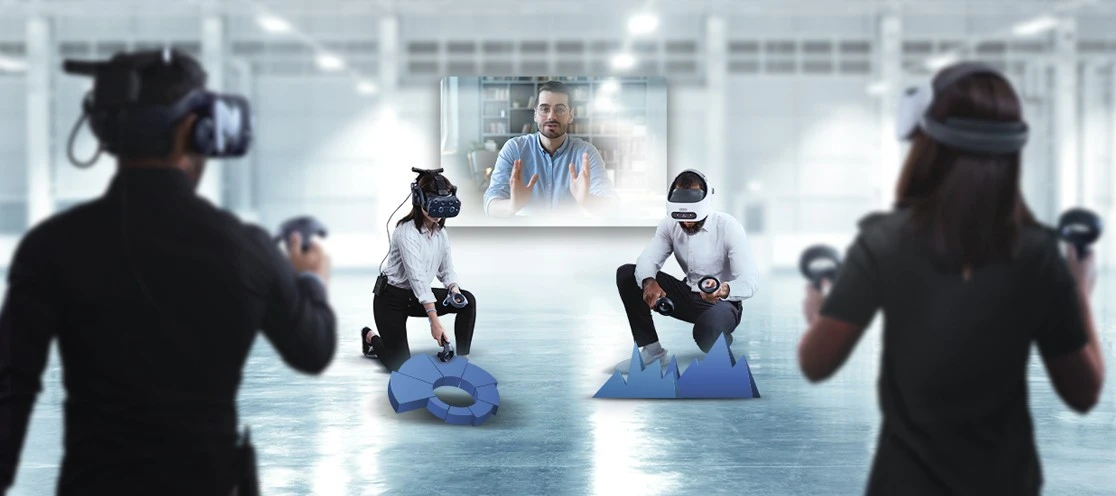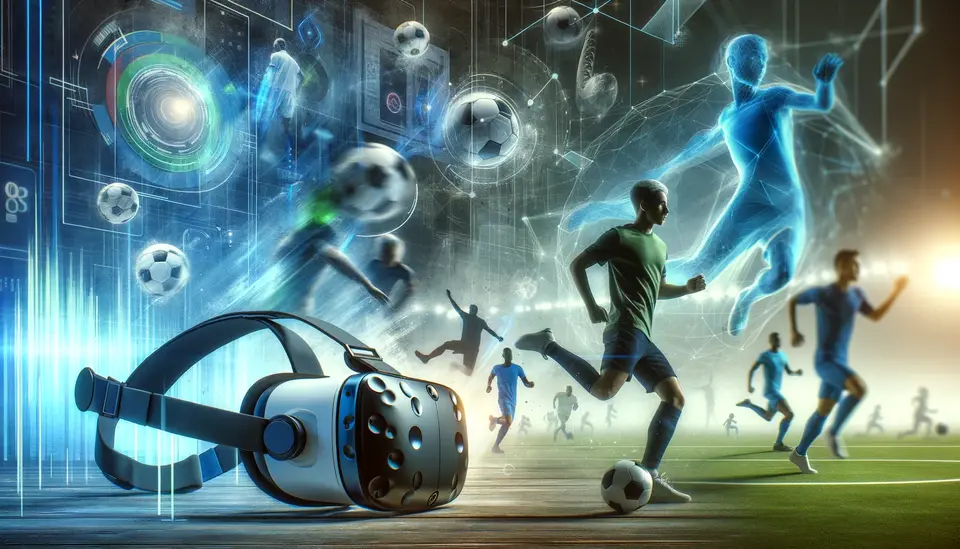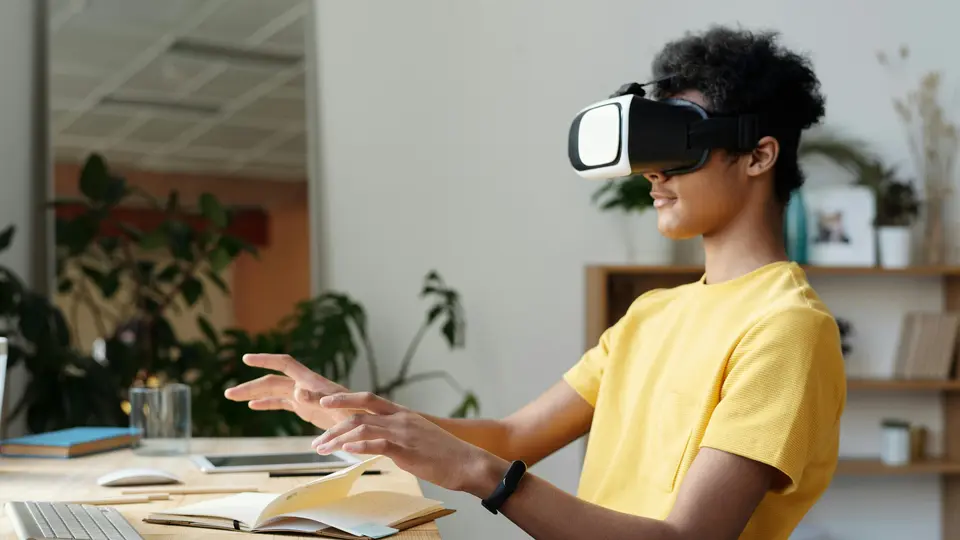15 Examples of the Use of Virtual Reality (VR) in Training
Posted on April 13, 2023 5 minutes 862 words
Table of contents
- 1. Medical Training: Osso VR
- 2. Military Training: STRIVR
- 3. Aviation Training: Boeing’s Virtual Reality Lab
- 4. Sports Training: STRIVR in NFL
- 5. Automotive Training: Ford’s Virtual Reality Lab
- 6. Firefighting Training: FLAIM Trainer
- 7. Hospitality Training: KFC’s The Hard Way
- 8. Construction Training: Bechtel’s 4D Simulations
- 9. Retail Training: Walmart’s VR Academy
- 10. Law Enforcement Training: VirTra
- 11. Public Speaking Training: Ovation
- 12. Language Learning: Mondly
- 13. Safety and Emergency Response Training: Pixo VR
- 14. Space Exploration Training: NASA’s Hybrid Reality Lab
- 15. Soft Skills Training: Talespin’s Virtual Human Platform
- Conclusion
Virtual reality (VR) has become a game-ch anger in training and education, providing immersive, interactive experiences that enhance skill development and knowledge retention. As VR technology continues to evolve, various industries have adopted it to improve their training methods. In this blog post, we will explore 15 real-world examples of VR being used in training across different sectors, showcasing their success stories and innovations.
1. Medical Training: Osso VR
Osso VR is a surgical training platform that allows medical professionals to practice complex procedures in a safe, virtual environment. Used by top hospitals and medical schools worldwide, Osso VR enables surgeons to rehearse surgeries, reduce errors, and improve patient outcomes.
2. Military Training: STRIVR
STRIVR is a VR training platform used by the US military to simulate realistic combat scenarios, helping soldiers develop strategic thinking, teamwork, and decision-making skills. By creating a risk-free environment, STRIVR enables military personnel to refine their skills without the dangers of real-life combat.
3. Aviation Training: Boeing’s Virtual Reality Lab
Boeing’s Virtual Reality Lab provides an immersive experience for pilots to train in realistic flight conditions. This state-of-the-art flight simulator improves pilots’ skills and reduces the risk of accidents in real-life situations, leading to safer skies for all.
4. Sports Training: STRIVR in NFL
STRIVR’s VR technology is also used by several NFL teams, allowing athletes to analyze and refine their techniques, practice decision-making under pressure, and simulate real-world competition scenarios. This groundbreaking approach to sports training has led to improvements in player performance and injury prevention.
5. Automotive Training: Ford’s Virtual Reality Lab
Ford’s Virtual Reality Lab allows mechanics to practice repairing and maintaining vehicles in a virtual garage, honing their skills without the need for physical equipment. This cutting-edge technology has led to improved efficiency and reduced training costs for the automotive giant.
6. Firefighting Training: FLAIM Trainer
The FLAIM Trainer is a VR training system that enables firefighters to practice extinguishing fires, navigating smoke-filled environments, and coordinating with their team members in a controlled, virtual environment. This innovative tool helps firefighters develop critical skills while minimizing the risk of injuries during training.
7. Hospitality Training: KFC’s The Hard Way
KFC created a VR training game called “The Hard Way,” which teaches employees how to prepare its famous fried chicken. The immersive, interactive experience helps new employees learn the process faster and more effectively, leading to improved food quality and customer satisfaction.
8. Construction Training: Bechtel’s 4D Simulations
Bechtel, a global engineering and construction company, uses VR for 4D simulations to train workers in construction tasks, safety protocols, and heavy machinery operation. By offering a controlled, virtual environment, Bechtel has reduced workplace accidents and improved overall project efficiency.
9. Retail Training: Walmart’s VR Academy
Walmart implemented a VR Academy to train its employees in customer service, sales techniques, and store management. This innovative approach to retail training has improved employee performance, leading to a better shopping experience for customers.
10. Law Enforcement Training: VirTra
VirTra provides law enforcement agencies with VR training systems that simulate high-speed chases, hostage situations, and active shooter incidents. This advanced technology helps officers develop essential skills, improving public safety and reducing the risk of injury during training.
11. Public Speaking Training: Ovation
Ovation is a VR public speaking training platform that helps users overcome their fear of public speaking by simulating realistic audience interactions. Users can practice and refine their presentation skills, leading to increased confidence and effectiveness in real-world speaking situations.
12. Language Learning: Mondly
Mondly is a VR language learning app that immerses users in foreign language environments, allowing them to practice their language skills with virtual native speakers and develop a deeper understanding of the culture. By offering interactive conversations and real-life scenarios, Mondly has transformed the way people learn new languages.
13. Safety and Emergency Response Training: Pixo VR
Pixo VR develops VR training solutions for safety and emergency response, simulating natural disasters, workplace accidents, and other emergencies. This technology enables individuals to practice their response skills and learn how to stay safe in high-pressure situations, ultimately saving lives and reducing injuries.
14. Space Exploration Training: NASA’s Hybrid Reality Lab
NASA’s Hybrid Reality Lab uses VR technology to simulate spacewalks, extravehicular activities, and other aspects of space exploration. This immersive training prepares astronauts for the challenges they will face in outer space and contributes to the success of future missions.
15. Soft Skills Training: Talespin’s Virtual Human Platform
Talespin’s Virtual Human Platform is a VR training solution that helps individuals develop essential soft skills, such as empathy, communication, and conflict resolution. By placing users in realistic social situations, the platform enables them to refine their interpersonal skills, leading to improved professional and personal relationships.
Conclusion
These 15 real-world examples showcase the incredible potential of virtual reality in training and education across various industries. As VR technology continues to advance, we can expect even more innovative applications to emerge, further revolutionizing the way we learn and develop skills. Embracing VR technology in training not only leads to increased knowledge retention and skill development but also improves safety, efficiency, and overall performance in the workplace and beyond.








